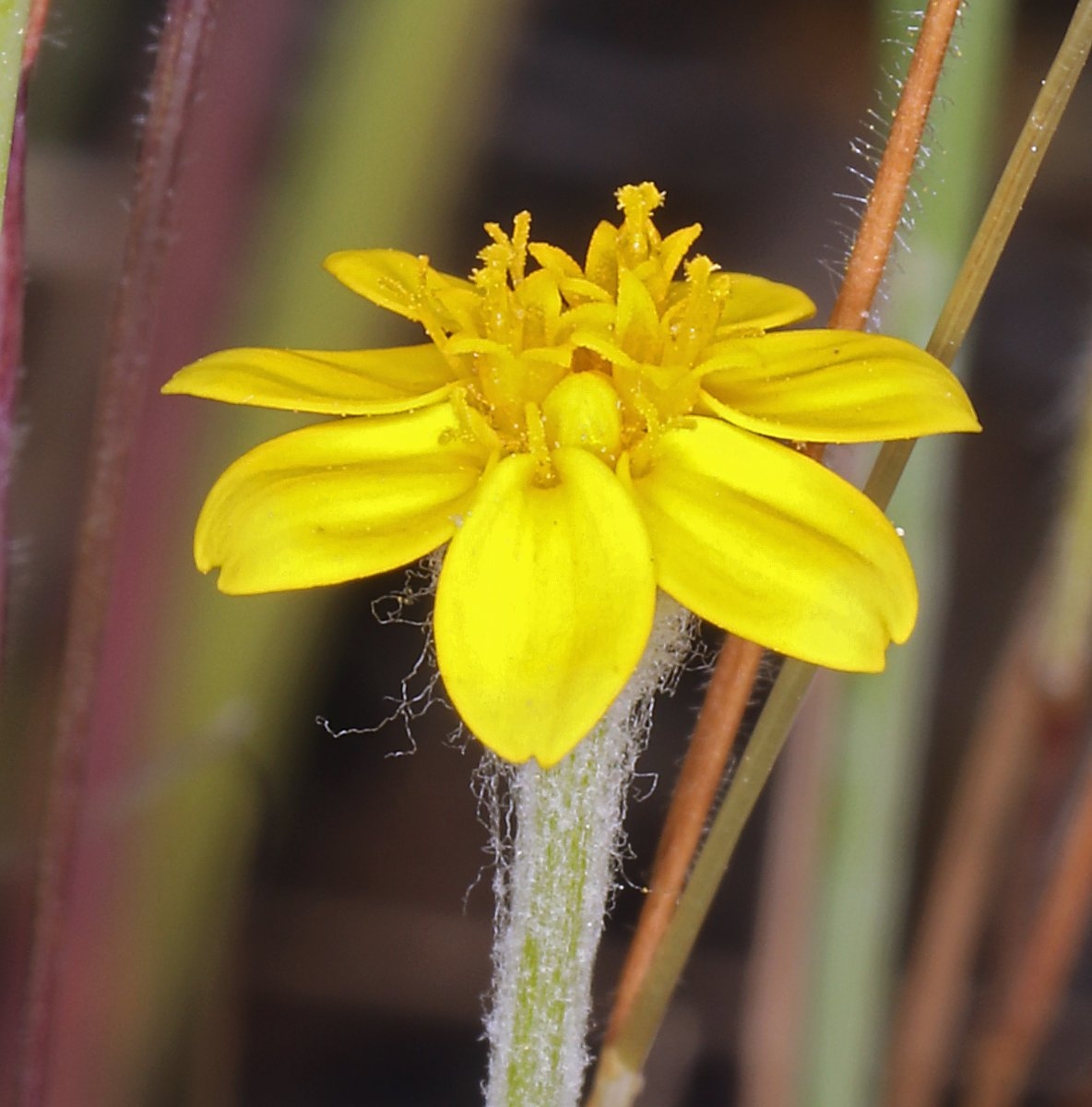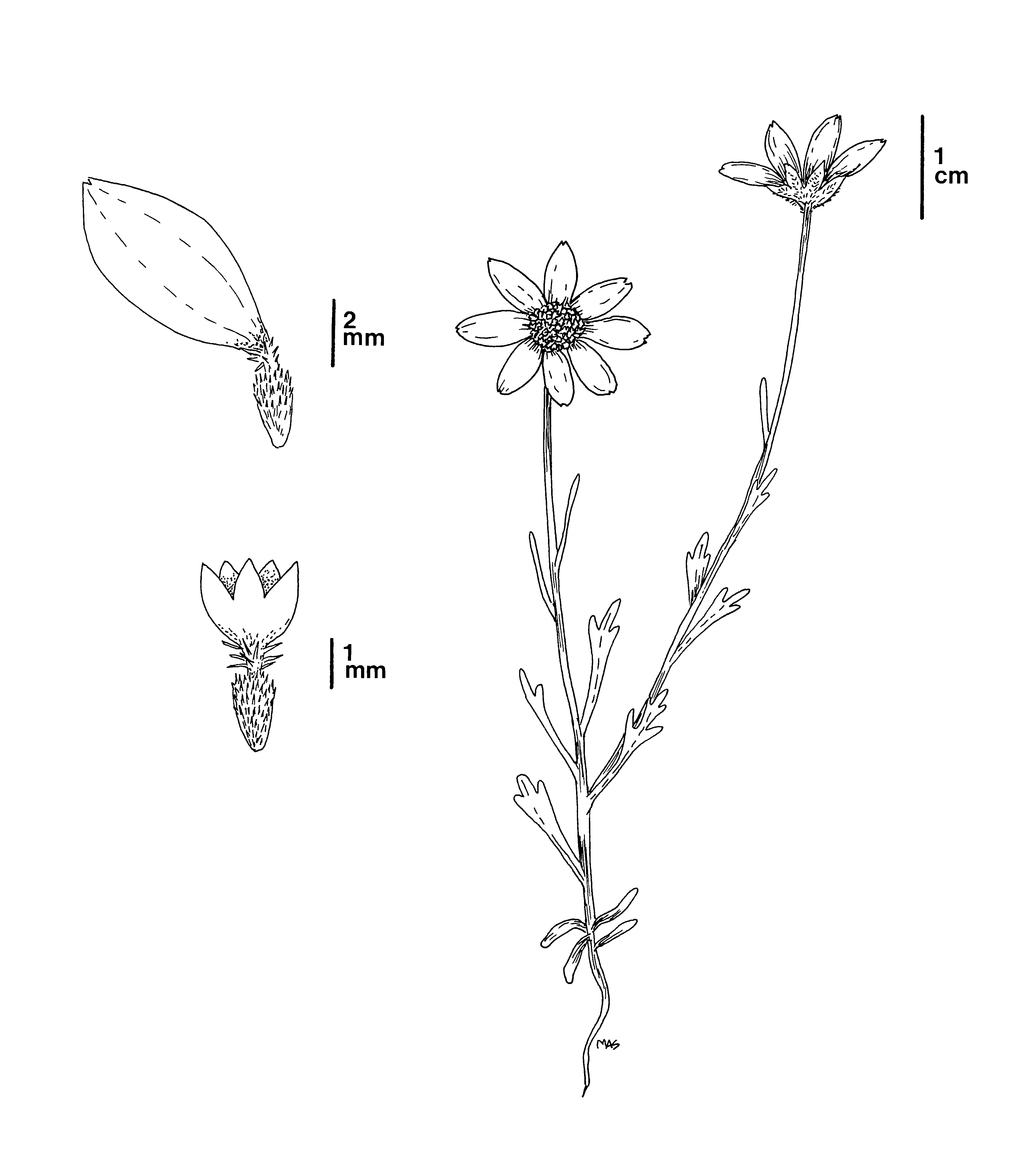(Pseudobahia bahiifolia)
 © 2022 Steve Matson
© 2022 Steve Matson

Hartweg’s golden sunburst is a California endangered plant species, which means that killing or possessing plants is prohibited by the California Endangered Species Act (CESA). This species is also listed as endangered under the federal Endangered Species Act. Hartweg’s golden sunburst is an annual herb in the sunflower family (Asteraceae). The genus Pseudobahia consists of only three species, and all of them are annual plants covered in wooly hairs that are endemic to California. San Joaquin adobe sunburst (Pseudobahia peirsonii) is also listed as endangered under CESA. Hartweg’s golden sunburst grows 5 to 20 centimeters tall and each flower head is approximately 15 mm across with bright yellow flowers. Hartweg’s golden sunburst blooms from March to April.
There are 27 documented occurrences of Hartweg’s golden sunburst, all along the eastern side of the Central Valley, and the lower central Sierra Nevada foothills, with occurrences concentrated in Stanislaus, Madera, Merced, and Fresno Counties. The California Natural Diversity Database reports that 23 occurrences are presumed extant, 3 are possibly extirpated, and one is extirpated. Hartweg’s golden sunburst has been found in heavy clay soils, and in association with Amador soils and pumiceous Rocklin soils. The species occurs almost entirely in non-native grasslands, particularly along the tops of mima mounds. Plants are found almost always on north or northeast facing slopes with minimal grass cover. These microhabitats seem to provide suitable soil moisture and reduced competition from introduced annual grasses. However, they are not abundant on these soils and only occur sporadically, with most occurrences consisting of less than 100 plants.
Hartweg’s golden sunburst is primarily threatened by the conversion of natural habitat for residential development, and secondarily threatened by agricultural development. Other threats include drought and reduced snowpack, storms and flooding, pollution, pesticides, herbicides, water quality, wildfires and altered fire regimes, grazing, mining, invasive species, competition, and predation.
Recommendations for conserving Hartweg’s golden sunburst include protecting lands with known occurrences, cooperating with landowners to conserve and protect populations on private land, conducting coordinated surveys of all recorded occurrences, completing a recovery plan, and maintaining conservation seed collections.
CDFW may issue permits for Hartweg's golden sunburst pursuant to CESA, and you can learn more about the California laws protecting Hartweg's golden sunburst and other California native plants. Populations of Hartweg’s golden sunburst occur in CDFW’s Central Region. More information on Hartweg’s golden sunburst is also available from the U.S. Fish and Wildlife Service Species Profile for Hartweg's Golden Sunburst.